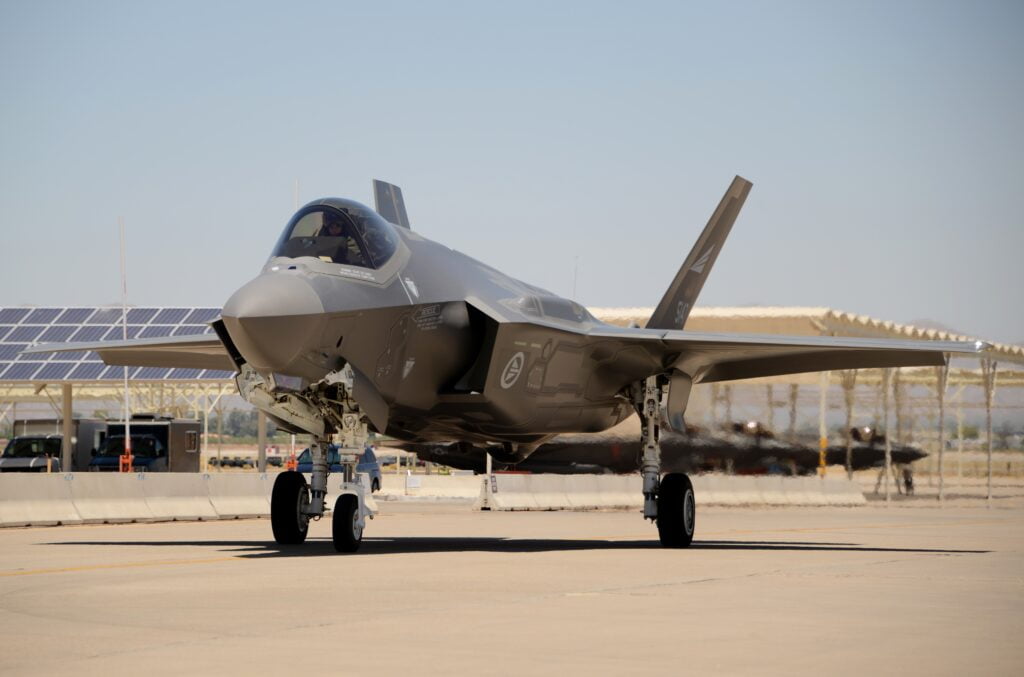
On this page
In a recent event in Charleston, South Carolina, there was a pretty expensive F-35 stealth fighter jet, costing a whopping $80 million, that crashed. The U.S. military is now asking regular folks for help to find this missing jet. Luckily, the pilot got out of the plane safely; he flew one of those Marine Corps versions called the F-35B. They took him to a nearby hospital, and he’s okay. The good news is that his buddy, who was flying another plane alongside him, also landed safely at Joint Base Charleston.
Right now, they’re looking for the missing jet around Lake Moultrie and Lake Marion. The weather when it happened might have played a part in the crash, but they’re not sure yet. Even though the jet is super expensive and it’s a big loss, the folks in charge want everyone to help out. They think that if regular people share any info they have, it could really help find the missing F-35.
The F-35 Lightning II is a cutting-edge multirole fighter jet that has garnered significant attention and interest since its inception. Here are some fascinating aspects of the F-35:
Stealth Technology
The F-35’s stealth capabilities are achieved through its shape and coatings that reduce its radar cross-section. This enables it to operate deep within enemy territory while remaining largely undetectable, giving it a crucial advantage in terms of survivability.
Variants
The three primary variants of the F-35 serve different purposes. The F-35A is the conventional takeoff and landing (CTOL) version used by the U.S. Air Force and several allied nations. The F-35B is the short takeoff and vertical landing (STOVL) variant employed by the U.S. Marine Corps and some international partners. The F-35C is the carrier-based variant designed for use on aircraft carriers by the U.S. Navy.
International Collaboration
The F-35 program is one of the most extensive examples of international collaboration in defense history. Partner nations share in the development, production, and maintenance of the aircraft. This global partnership strengthens diplomatic ties and ensures a broad user base.
Supersonic Speed
The F-35’s supersonic capabilities allow it to quickly engage and disengage from threats and cover large distances in a short amount of time, making it highly maneuverable and responsive to changing battle conditions.
Advanced Avionics
The aircraft’s avionics suite is equipped with an AESA (Active Electronically Scanned Array) radar, electronic warfare systems, and a Distributed Aperture System (DAS) consisting of multiple infrared sensors that provide an unparalleled level of situational awareness.
Vertical Landing
The F-35B’s STOVL capability allows it to operate from a variety of locations, including austere environments, amphibious assault ships, and smaller aircraft carriers. This versatility enhances its mission flexibility.
Stealthy Payload
Despite its stealthy design, the F-35 can carry an impressive array of weaponry, including air-to-air missiles like the AIM-120 AMRAAM and air-to-ground munitions like the Joint Direct Attack Munition (JDAM), ensuring it can engage a wide range of targets effectively.
Interoperability
The F-35’s ability to share data and communicate with other allied aircraft and systems through networks like Link 16 enhances the overall effectiveness of a combined air operation. It can act as a “quarterback” in the sky, directing other assets to maximize mission success.
Advanced Helmet
The F-35’s helmet is a technological marvel, offering a heads-up display, night vision capabilities, and augmented reality features. The helmet’s advanced design allows pilots to access critical information without looking down at their instrument panels.
Cost and Controversy
The F-35 program has faced scrutiny for its high cost, budget overruns, and delays during development. However, proponents argue that the aircraft’s advanced capabilities and its potential to replace aging fleets justify the investment
Global Deployment
F-35s have been deployed to various regions globally, serving as a deterrent to potential adversaries and supporting allies in maintaining air superiority. This global presence underscores its importance in modern air warfare.
Future Potential
The F-35 program continues to evolve, with ongoing software updates, maintenance improvements, and future upgrades planned to enhance its capabilities further. It is expected to remain a key asset in military aviation for the foreseeable future.
The F-35 Lightning II is a complex and versatile aircraft that combines advanced technology, international collaboration, and a wide range of capabilities, making it a critical component of modern air forces and defense strategies.












